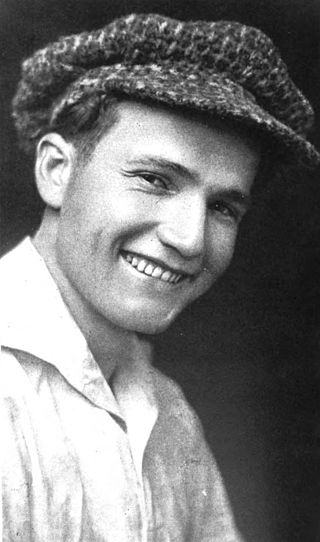
Frank Borzage was an American film director and actor. He was the first person to win the Academy Award for Best Director for his film 7th Heaven (1927) at the 1st Academy Awards.

Wesley Ruggles was an American film director.

George Brackett Seitz was an American playwright, screenwriter, film actor and director. He was known for his screenplays for action serials, such as The Perils of Pauline (1914) and The Exploits of Elaine (1914).

Leo White, was a German-born British-American film and stage actor who appeared as a character actor in many Charlie Chaplin films.

Reginald C. Barker was a pioneer film director.
Mutz Greenbaum, sometimes credited as Max Greene or Max Greenbaum, was a German film cinematographer.

Richard Oswald was an Austrian film director, producer, screenwriter, and father of German-American film director Gerd Oswald.

James Gordon Edwards was a Canadian-born film director, producer, and writer who began his career as a stage actor and stage director.

Tom Forman was an American motion picture actor, director, writer, and producer of the early 1920s.

George Fitzmaurice was a French-born film director and producer.

William Reeves Eason, known as B. Reeves Eason, was an American film director, actor and screenwriter. His directorial output was limited mainly to low-budget westerns and action pictures, but it was as a second-unit director and action specialist that he was best known. He was famous for staging spectacular battle scenes in war films and action scenes in large-budget westerns, but he acquired the nickname "Breezy" for his "breezy" attitude towards safety while staging his sequences—during the famous cavalry charge at the end of Charge of the Light Brigade (1936), so many horses were killed or injured so severely that they had to be euthanized that both the public and Hollywood itself were outraged, resulting in the selection of the American Humane Society by the beleaguered studios to provide representatives on the sets of all films using animals to ensure their safety.

Edward Sloman was an English silent film director, actor, screenwriter and radio broadcaster. He directed over 100 films and starred in over 30 films as an actor between 1913 and 1938.

Frank Currier was an American film and stage actor and director of the silent era.

George Nichols, sometimes credited in films as George O. Nicholls, was an American actor and film director. He is perhaps best remembered for his work at Mack Sennett's Keystone Studios.

James Colin Campbell was a film director, actor and screenwriter. He directed more than 170 American films between 1911 and 1924; and wrote scripts for 60 films between 1911 and 1922. He was born in Scotland, and died in Hollywood, California.
Maurice Elvey was one of the most prolific film directors in British history. He directed nearly 200 films between 1913 and 1957. During the silent film era he directed as many as twenty films per year. He also produced more than fifty films – his own as well as films directed by others.

Tom Wilson was an American film actor.
Hayford Hobbs was a leading British film actor of the silent era and later became a film director. He was born in London, England, in 1891. He made his first screen appearance in the 1915 film The Third Generation and appeared in his last film High Treason in 1929. The following year he directed his first film, a documentary about London.

James T. Kelley was an Irish-born American silent film actor.

Jack Pratt, born John Harold Pratt, (1878–1938) was a Canadian film director and actor. He directed several films and acted in dozens more. As a director, his work included screen adaptations of novels.
This page is based on this
Wikipedia article Text is available under the
CC BY-SA 4.0 license; additional terms may apply.
Images, videos and audio are available under their respective licenses.
















